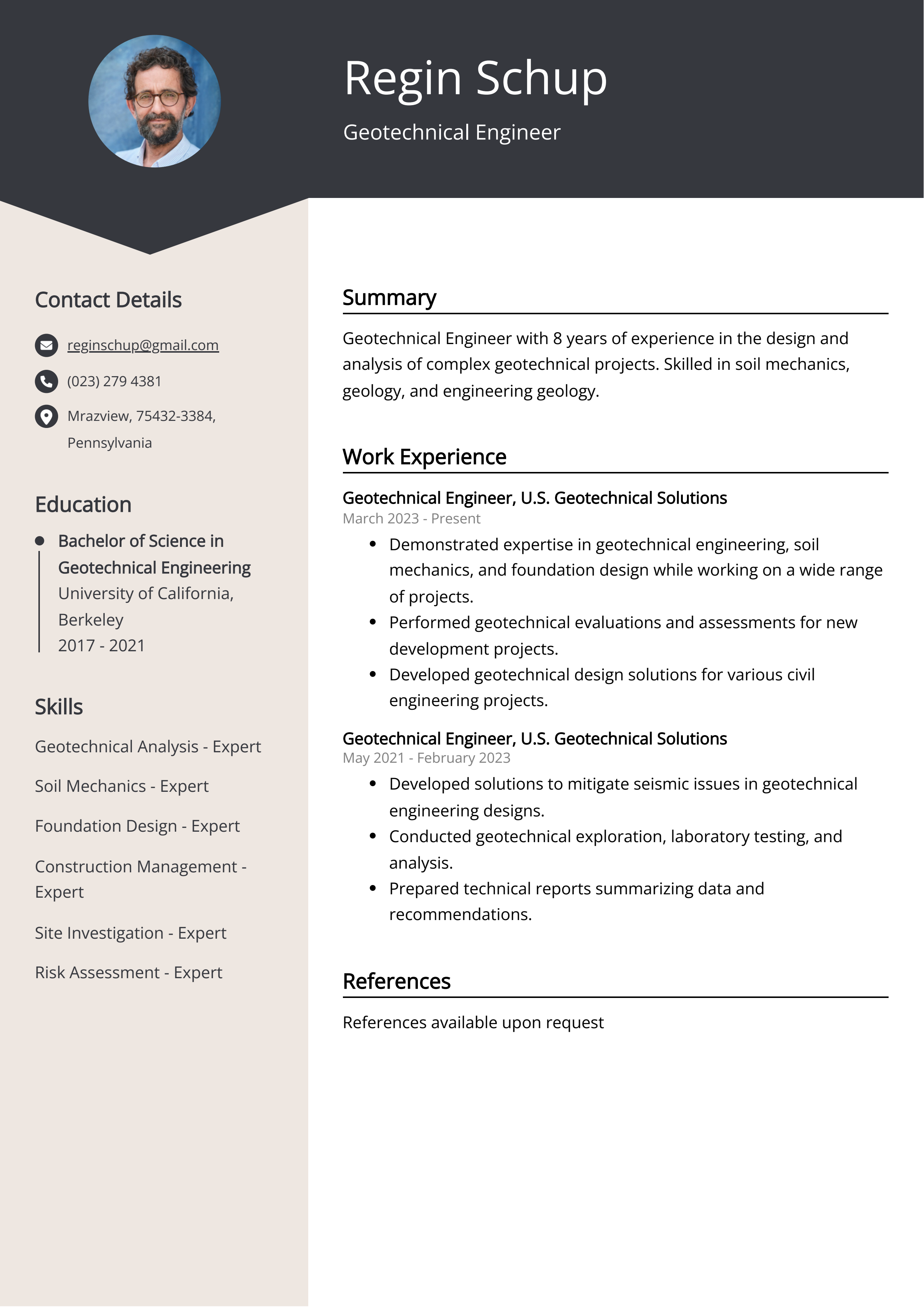Unknown Facts About Geotheta
Unknown Facts About Geotheta
Blog Article
Some Known Factual Statements About Geotheta
Table of Contents7 Simple Techniques For GeothetaAbout GeothetaMore About GeothetaAll About GeothetaSome Ideas on Geotheta You Need To Know

They conduct website investigations, gather examples, do laboratory tests, and examine data to evaluate the suitability of the ground for building jobs - Tailings Engineer. Based upon their searchings for, geotechnical designers give referrals for structure layout, incline stability, maintaining frameworks, and reduction of geotechnical threats. They work together with other specialists, such as architects, architectural engineers, and construction teams, to make sure that geotechnical considerations are integrated into the overall project style and implementation
By examining the habits and residential or commercial properties of soil and rock, they can identify potential geotechnical risks such as landslides, soil settlement, or slope instability. Their proficiency assists stop failings or mishaps that might jeopardize lives and home. Here are some in-depth tasks and obligations of a geotechnical designer: Site Investigation: Geotechnical engineers conduct website examinations to collect data on subsurface problems.
They interpret the information to comprehend the residential or commercial properties and habits of the soil and rock, including their strength, permeability, compaction features, and groundwater problems. Geotechnical Evaluation and Layout: Geotechnical designers assess the data collected during site investigations to evaluate the stability and suitability of the website for construction projects. They execute geotechnical estimations and modeling to review elements such as birthing capability, settlement, incline security, side planet stress, and groundwater circulation.
Some Known Facts About Geotheta.
Structure Style: Geotechnical engineers play an important role in designing structures that can safely sustain the designated framework. They examine the dirt problems and load demands to figure out the suitable foundation type, such as superficial foundations (e.g., grounds), deep foundations (e.g (https://ianhammond2191.wixsite.com/my-site-2/post/unlocking-the-secrets-of-geotechnical-engineering-with-geotheta)., piles), or specialized techniques like soil enhancement. They think about aspects such as settlement limits, bearing capacity, and soil-structure communication to establish optimal foundation layouts
They examine building plans, display site activities, and conduct area assessments to verify that the design recommendations are followed. If unpredicted geotechnical concerns occur, they examine the circumstance and supply suggestions for remediation or adjustments to the layout. Risk Analysis and Mitigation: Geotechnical engineers analyze geotechnical risks and dangers connected with the task website, such as landslides, liquefaction, or soil disintegration.

Cooperation and Interaction: Geotechnical engineers function carefully with other specialists associated with a task, such as engineers, structural designers, and construction groups. Effective communication and cooperation are vital to integrate geotechnical factors to consider into the total job layout and building and construction process. Geotechnical engineers give technological proficiency, solution inquiries, and ensure that geotechnical needs are satisfied.
The Best Strategy To Use For Geotheta
Right here are some kinds of geotechnical designers: Foundation Designer: Structure designers focus on making and examining foundations for structures. They examine the dirt problems, tons demands, and website characteristics to establish one of the most suitable structure type and design, such as shallow foundations, deep foundations, or specialized techniques like stack structures.
They assess the aspects affecting slope security, such as soil residential or commercial properties, groundwater problems, and slope geometry, and establish strategies to avoid incline failures and alleviate dangers. Earthquake Designer: Quake designers specialize in evaluating and making frameworks to withstand seismic forces. They examine the seismic threat of a website, evaluate dirt liquefaction potential, and establish seismic design criteria to make sure the safety and security and strength of structures during earthquakes.
They perform area screening, gather examples, and analyze the accumulated data to characterize the dirt homes, geologic formations, and groundwater conditions at a website. Geotechnical Instrumentation Designer: Geotechnical instrumentation engineers concentrate on monitoring read the article and measuring the behavior of dirt, rock, and structures. They install and keep instrumentation systems that check aspects such as dirt settlement, groundwater levels, slope activities, and architectural displacements to evaluate efficiency and offer early warnings of possible issues.
Fascination About Geotheta
They carry out examinations such as triaxial tests, debt consolidation examinations, straight shear examinations, and leaks in the structure tests to gather information for geotechnical analysis and layout. Geosynthetics Designer: Geosynthetics designers specialize in the design and application of geosynthetic products, such as geotextiles, geogrids, and geomembranes. They make use of these materials to enhance soil security, reinforce slopes, offer drain solutions, and control erosion.
They often tend to be investigatory individuals, which suggests they're intellectual, reflective, and inquisitive. They wonder, methodical, rational, logical, and sensible. Several of them are likewise social, meaning they're kind, generous, participating, client, caring, useful, compassionate, skillful, and pleasant. Does this audio like you? Take our free occupation test to figure out if geotechnical engineer is just one of your top occupation suits.
In the workplace setting, geotechnical engineers utilize specialized software application devices to perform computations, create styles, and examine information. They prepare reports, testimonial project requirements, connect with clients and team participants, and coordinate job activities. The workplace setting provides a conducive environment for study, evaluation, and collaboration with other specialists involved in the task.
3 Simple Techniques For Geotheta
They frequently go to project sites to carry out website investigations, assess geotechnical problems, and collect data for analysis. These gos to include traveling to different places, often in remote or difficult terrains. Geotechnical designers might do soil sampling, conduct tests, and display building and construction tasks to ensure that the geotechnical elements of the job are being applied properly.
Geotechnical designers additionally work in specialized geotechnical laboratories. In these centers, they conduct experiments, perform examinations on dirt and rock examples, and evaluate the design buildings of the materials. Geotechnical research laboratory engineers function extensively in these atmospheres, dealing with screening devices, operating instruments, and taping information. They work together with other research laboratory staff to ensure exact and dependable testing outcomes.
Report this page